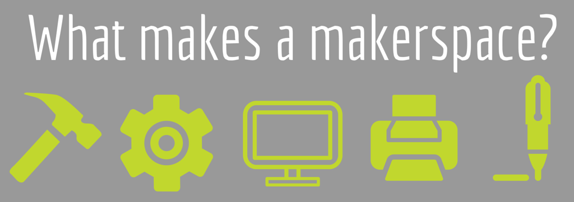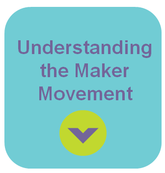By: Geena Maharaj on April 9th, 2015
Academic Subject: STEM | Featured Topics: Industry News and Trends | Featured Topics: Differentiated Instruction | Featured Topics: Student Engagement

If you've been keeping up on education trends lately, chances are you’re familiar with the recent emphasis on doing, creating, crafting, constructing, designing, building…essentially, making! From using laser cutters to building a house of LEGO® bricks, the goal is to make. The importance of this multidisciplinary hands-on learning has been sweeping the nation, one makerspace at a time.
Makerspaces share roots with a myriad of concepts. The DIY (Do-It-Yourself) movement, constructivist philosophy, whole-brain thinking, and even the STEM initiative all are contributors to what we know today as the Maker Movement. Because of its diverse background, makerspaces have become somewhat of a loosely defined concept—so what makes a makerspace? It may be more simple than you think! The International Society for Technology in Education (ISTE) notes several common elements of successful makerspaces:
You can set up a makerspace in just a few steps:
First, you need a space. It can be an unused classroom, a computer lab, a spare room in a library, a garage, any available space condusive to making.
Next, you need supplies for making. This is where the loose definition comes into play. Many individuals associate makerspaces with the latest and greatest technology. Fabricated software, 3D printers, robotics, and computer coding programs often are salient essentials. But setting up these spaces can be as simple as involving a quick Target® run, or even a walk through your home.
Though that’s not to say advanced technological makerspaces aren’t worth the time and resources. Below are advantages to both ends of the makerspace spectrum.
“Low”-Tech |
High-Tech |
o Paper cutouts o Beads o Clay o Duct tape o Gears o Paint |
o 3D printers o Laser cutters o Welding equipment o Milling machines o Lathes o Computers & software |
The types of creations that come out of makerspaces are endless. As long as students are making, they are fulfilling the ultimate goal—taking control of their own, hands-on learning.
For a more in-depth look at makerspaces, check out our VariQuest™ white paper titled "Understanding the Maker Movement." Click below to read!
https://www.iste.org/explore/ArticleDetail?articleid=103